Eurasian Teal
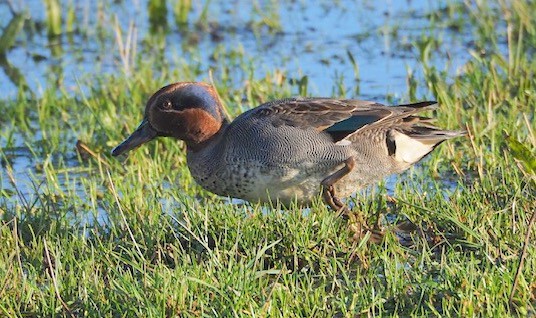
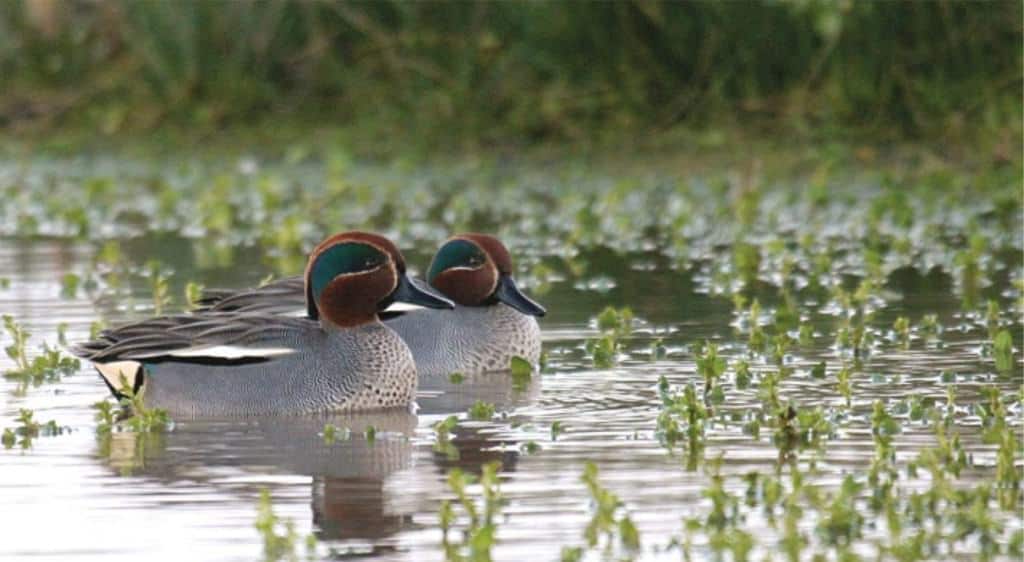
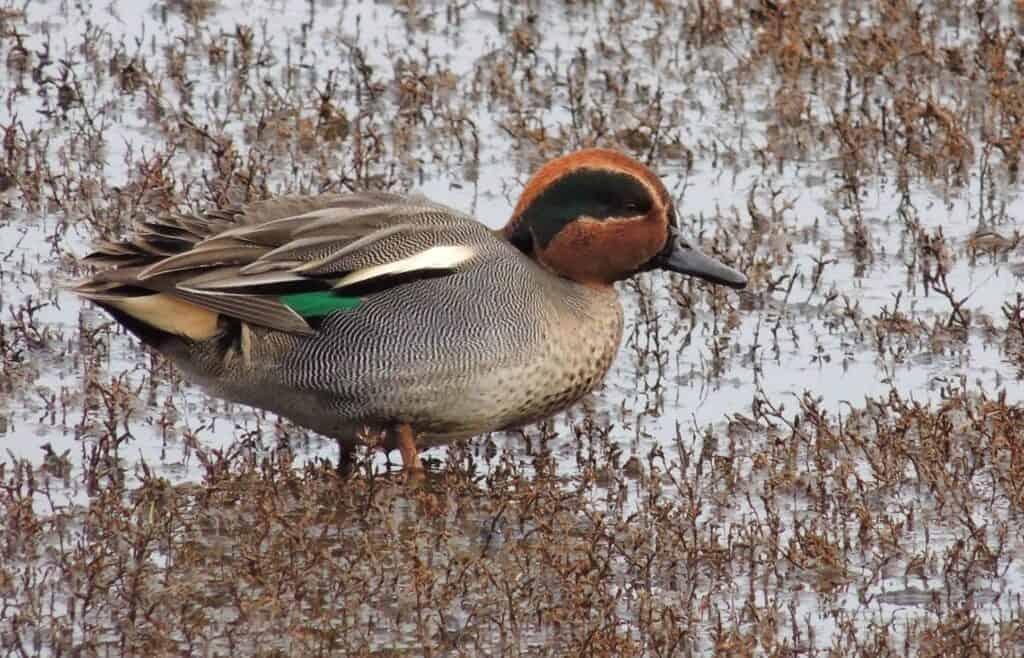
Shy, and sometimes reluctant to breed in captivity, Eurasian Teal are charming, if nervous, little ducks. Their soft ‘krick’ call is instantly recognisable and carries for a surprising distance.
Anas crecca
The Eurasian Teal is the smallest of British waterfowl. A common, quick and agile surface-feeding duck; springing into flight at the least disturbance. In the wild it often forms large flocks outside the breeding season. It is usually found in sheltered wetlands, feeding on seeds and aquatic invertebrates.
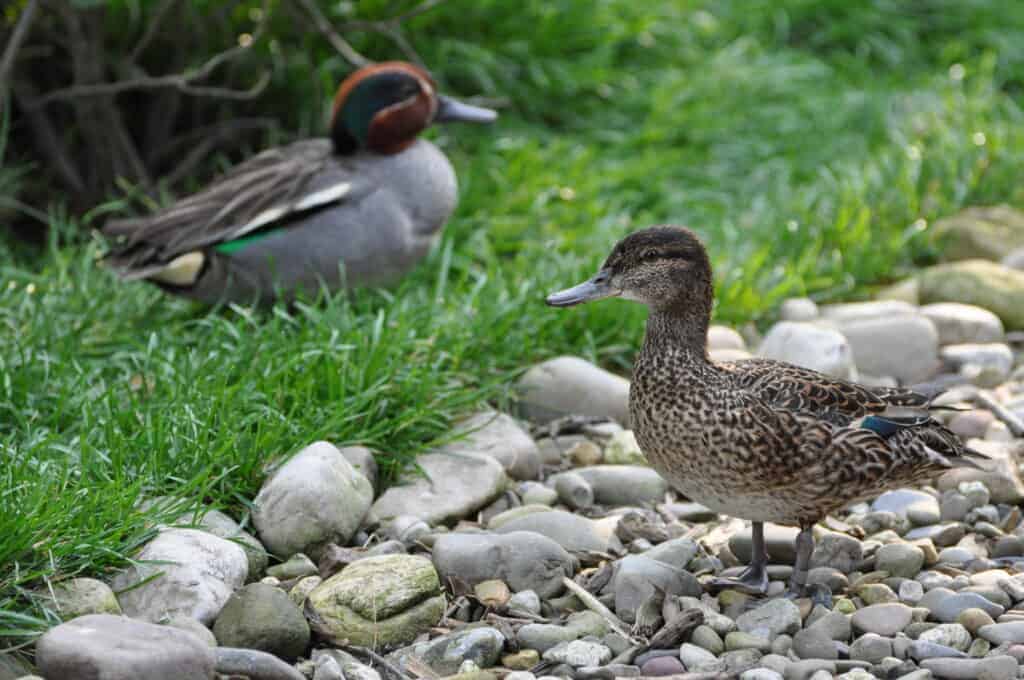
The drake’s bright chestnut head and wide metallic dark green stripe running from in front of the eye to the neck give him a very dapper appearance. Close-to, his flanks are finely vermiculated. The female is streaky brown like many of the dabbling ducks. Both sexes have a green metallic speculum with a white edge. The name ‘teal’ as a shade of dark greenish-blue like the colour patterns on the drake’s head and both sexes’ wings is attested from 1923.
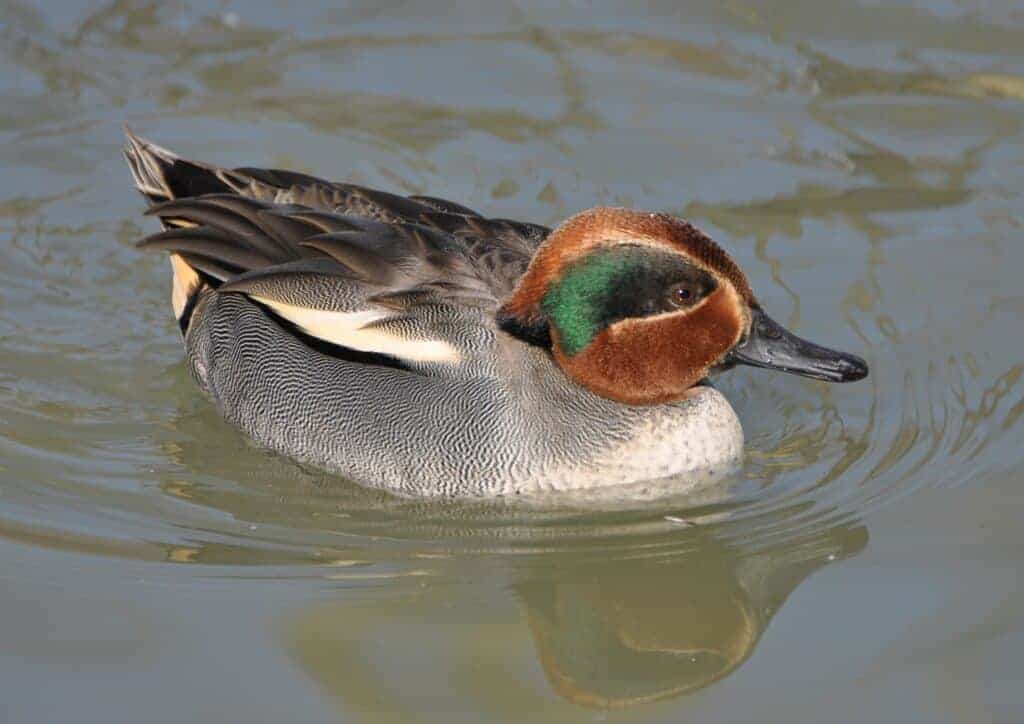
Breeding in north and east Europe, on freshwater marshes, wet heaths and high moorland pools, Teal move south and west to overwinter.
Although superficially similar, Eurasian Teal is now considered a distinct species to the Green-winged Teal Anas carolinensis. DNA studies in the late 1990s revealed the approximate division between the two is at the Bering Sea.
Eurasian Teal lay a clutch of 8-11 cream or pale olive-buff eggs. The duck makes a small hollow and adds plant material pulled in from around the nest as the clutch progresses. She plucks down to cover the eggs as the last ones are laid. Incubation is relatively short, at 20-23 days.
In the breeding season, the drake defends his mate from copulation attempts by other males, but deserts the female once incubation starts.
If Green-winged Teal are also kept, they should be kept in separate enclosures, as they will readily interbreed.
FURTHER READING
Focus on Green-winged Teal identification in the field (UK), BirdGuides.